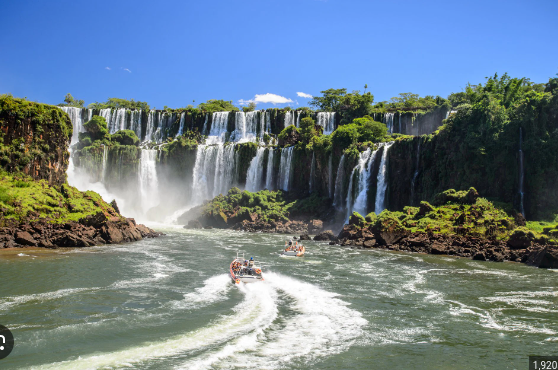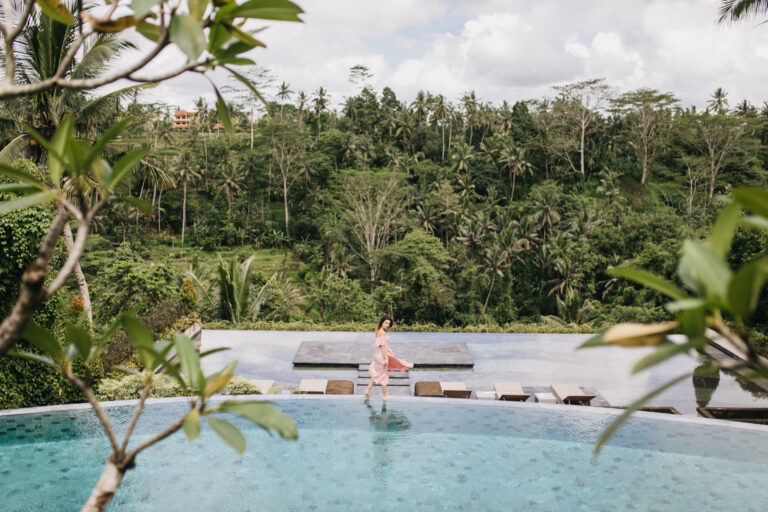Angel Falls, Venezuela
At a stunning 979 metres, Angel Falls, the highest unbroken waterfall in the world, is a spectacular sight to see. The falls in Canaima National Park in Venezuela’s Auyán-tepui mountain range are also referred to as Kerepakupai Vená by the native Indigenous Pemon people. The falls can be reached by boat or light aircraft and are hidden deep within a remote jungle.South American nature includes many wonders of nature like Iguazu Falls, the Amazon River, and the incredible Patagonia area.
Caño Cristales, Colombia
The Cao Cristales in Colombia, also referred to as “the river that escaped from heaven,” is unquestionably the most stunning river in the entire world. It is situated in La Macarena National Park. The water’s vivid red algae blooms between June and November each year, turning the river a vibrant red colour! One of Colombia’s most beautiful natural wonders, it is a truly extraordinary view.
The Amazon rainforest
The vast Amazon rainforest, which is found in many South American nations but is concentrated most heavily in Brazil, Peru, and Colombia, defies description. Exploring the Amazon is a unique South American adventure because it is the largest jungle on the globe and it is crossed by the mightiest river.
Lake Titicaca, Bolivia & Peru
The largest lake in South America, at least in terms of water volume and surface area combined, is located in the Andes highlands on the boundary between Bolivia and Peru. Lake Titicaca, also known as the “highest navigable lake in the world,” is a breathtaking location that is ringed by snow-capped mountains and populated with picturesque islands.
Torres del Paine, Chile
Torres del Paine is a stunning national park in the far south of Patagonian Chile. It is well-known for its craggy mountains, three of which are shown below, as well as icy-blue alpine lakes and glaciers. In actuality, the name “paine” is derived from an ancient Indigenous word for “blue.” The greatest months to go trekking in this magnificent landscape are November through April, which correspond to the southern hemisphere’s spring and summer.
Perito Moreno Glacier, Argentina
The Perito Moreno Glacier, the third-largest freshwater reserve in the world and a rarity among glaciers globally, is situated in Argentina’s Los Glaciares National Park. It is also progressing. For tourists who are feeling particularly daring, there is even the option of taking a five-hour trip on the glacier’s ice.
Iguazu Falls, Argentina & Brazil
Iguazu Falls, the world’s greatest waterfall system, are located on the border between Argentina and Brazil, while around 80% of the falls are in Argentina. Nearly half of the flow, which is a beautiful torrent of water stretching 82 by 150 by 700 metres, is produced by the Iguazu River. Iguazu Falls, with its cacophony of noise and wall of spray, is unquestionably the most overpowering sensory experience in South America.
Salar de Uyuni, Bolivia
The Salar de Uyuni, the largest salt flat in the world at 10,582 square kilometres, is located in Bolivia. It is undoubtedly the most well-liked natural tourism destination in South America because of its extraordinary natural beauty and distinctive views. The salt flats are coated in a thin layer of water during the wet season, which is between January and February, creating some incredibly bizarre reflections against the great Andean sky.
The Pantanal, Brazil
The Pantanal, primarily in Brazil, is a natural area with the largest tropical wetlands in the world with a truly astounding degree of biodiversity spread across its 170,000 square kilometres. With over 1,000 bird species, 300 different mammal species, and approximately 500 reptile species, the Pantanal is the South American equivalent of a safari. Additionally, it’s the best location in South America to see the elusive jaguar.
Mount Roraima, Venezuela
Although it is accessed from Venezuela, Mount Roraima is situated in Venezuela’s Canaima National Park and is on the triple boundary of Venezuela, Brazil, and Guyana. Roraima, a massive tepui rock structure that is a component of the Guiana Shield, is a very bizarre and exceptional sight that provides spectacular panoramic views over the jungles of all three neighbouring countries. One easy method can be used to ascend Roraima, and the entire hike lasts around five days.





